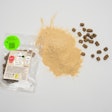
In the US, 95% of pet owners consider their pets to be part of the family—up 7 points from 2007, according to a survey by Harris Poll. Not surprisingly, there isn’t much people won’t do for their pets, and this sentiment has only strengthened over the past few years, especially for pet food.
Pet food accounts for 76% of the pet care category, representing a significant opportunity for pet companies. And certain pet food segments, including healthy treats, specialty pet foods and other more premium options, have seen significant growth as Americans search out the best of the best for their furry family members. But what qualities in particular are on consumers’ minds when it comes to making the all-important decision of what to feed their furry friends? The new “Humanization of Pet Food” report found several trends.
1. Pet owners are saying no to GMOs. For pet food products, the claim “no genetically modified ingredients (GMOs)” beat out other health claims by a landslide. Moreover, when asked about specific claims for which they would be willing to pay more, 43% of US pet owners said they’d ante up for “non-GMO” products.
2. Nature has overtaken science as a reason to believe. While consumers once trusted science to deliver the magic mix of vital nutrients for their pets, they’re putting more faith in nature these days. Just as with their own food choices, consumers increasingly prefer pet foods made in a kitchen over those made in a lab.
3. Pet parents are focused on making healthy — not indulgent — choices. In spite of the booming US pet treat market, most consumers feel that pleasing pets should take a backseat to picking healthy fare. In fact, 85% believe they can extend the lives of their pets based on the foods they feed them.
4. Non-traditional food forms hold a certain fascination. Consumers are surprisingly open to new pet food forms focused on health, with US pet owners selecting fruit/vegetable chews (47%), nutrient drops/powders (36%) and soups and stews (35%) as their top choices for new product forms.
5. Far-out flavor innovation is likely to flop. It turns out the “humanization” of pet food has some limitations. Consumers aren’t convinced that pets share their more diverse palettes for adventurous cuisine, so don’t expect to see dry food flavors like “chicken tandoori” or “beef bolognese” in the pet aisle any time soon.
Pet owners want what is best for their loved ones, and that includes the best foods to help their pets live long, healthy lives. As a result, savvy pet food manufacturers can increasingly look to human food trends to find potential new opportunities in their category.

















